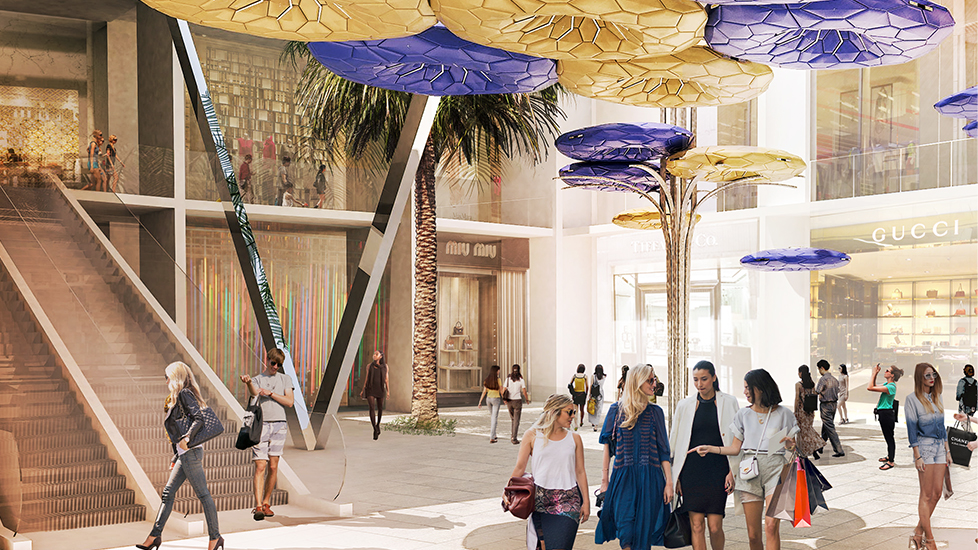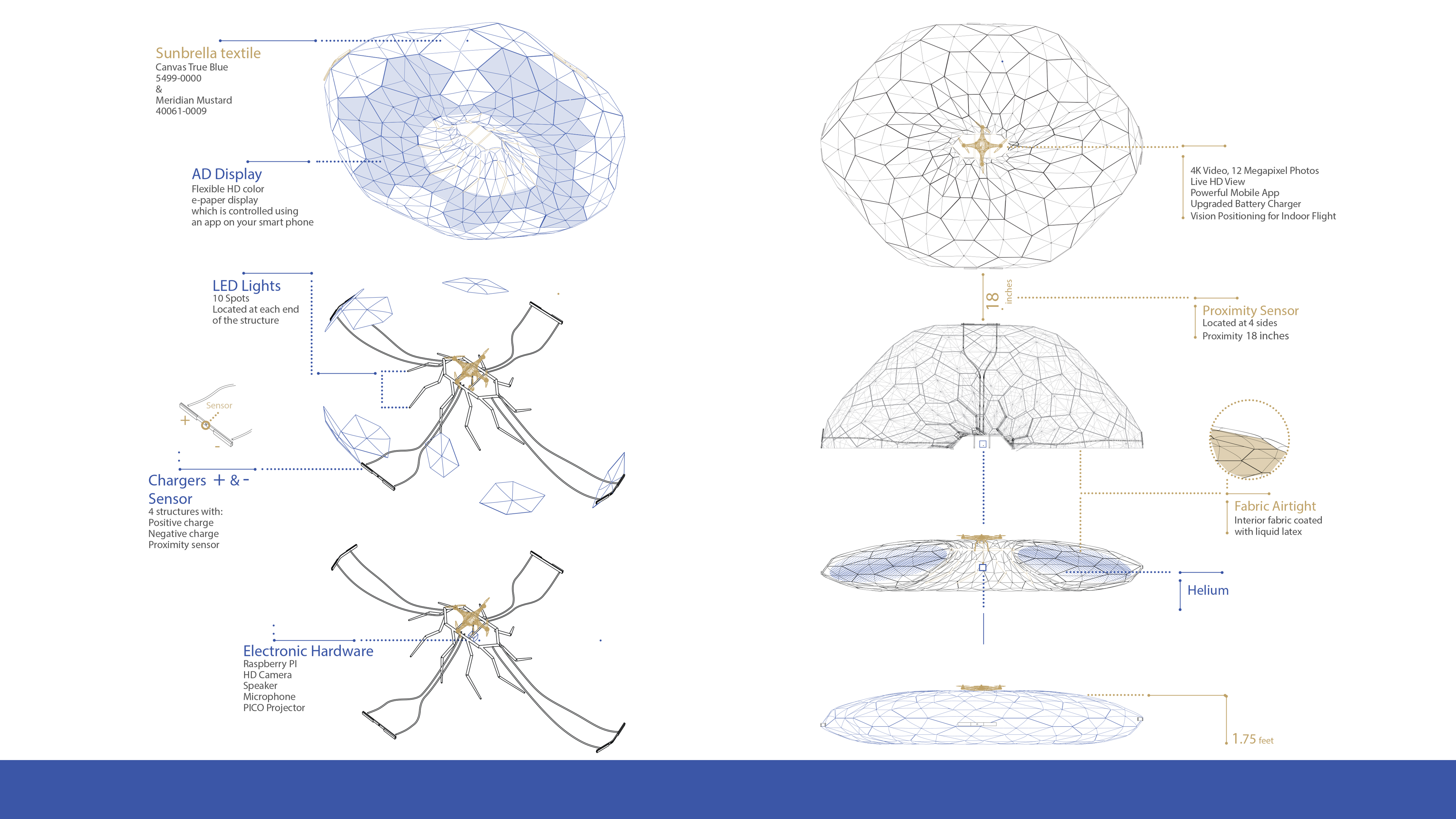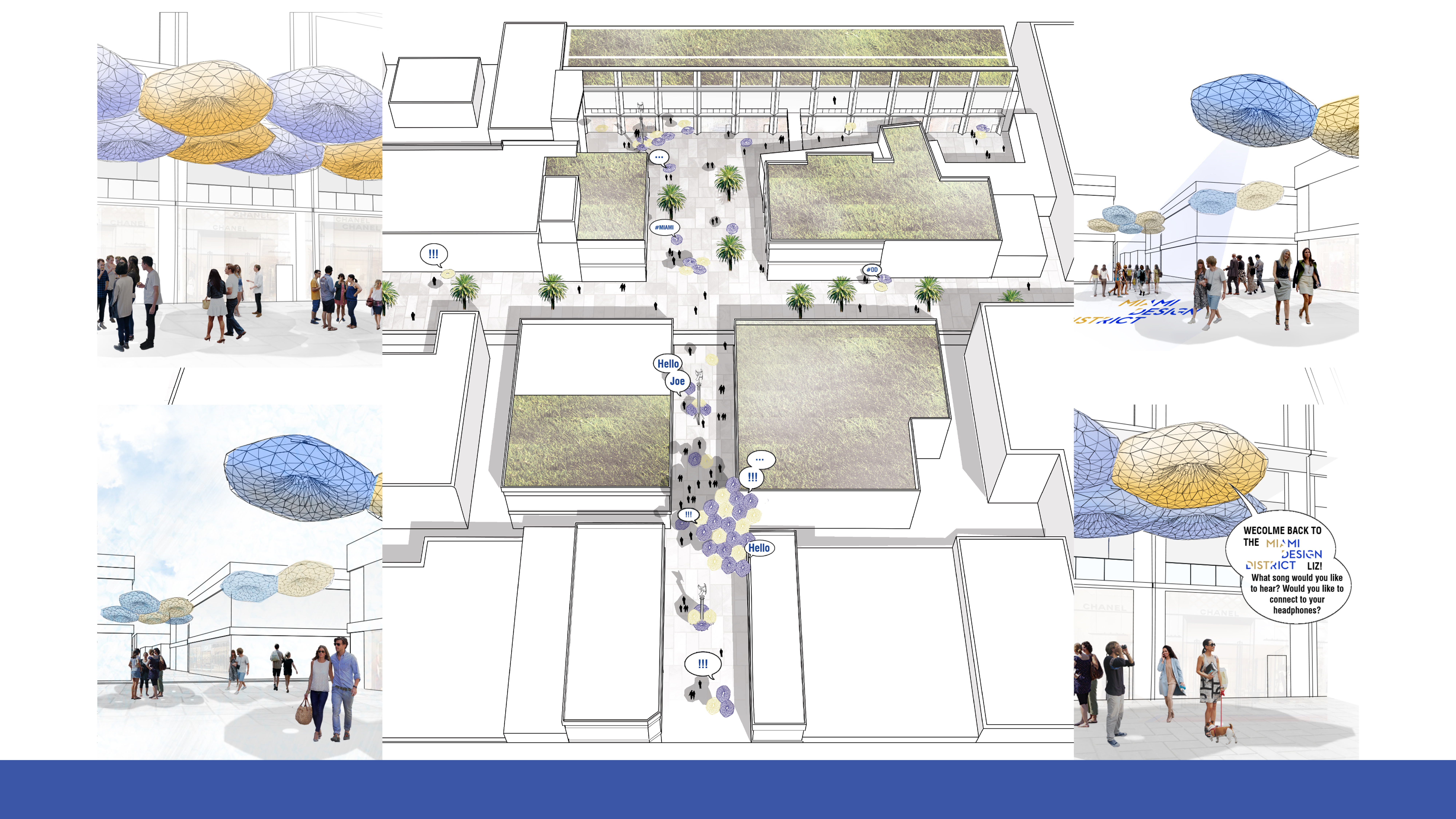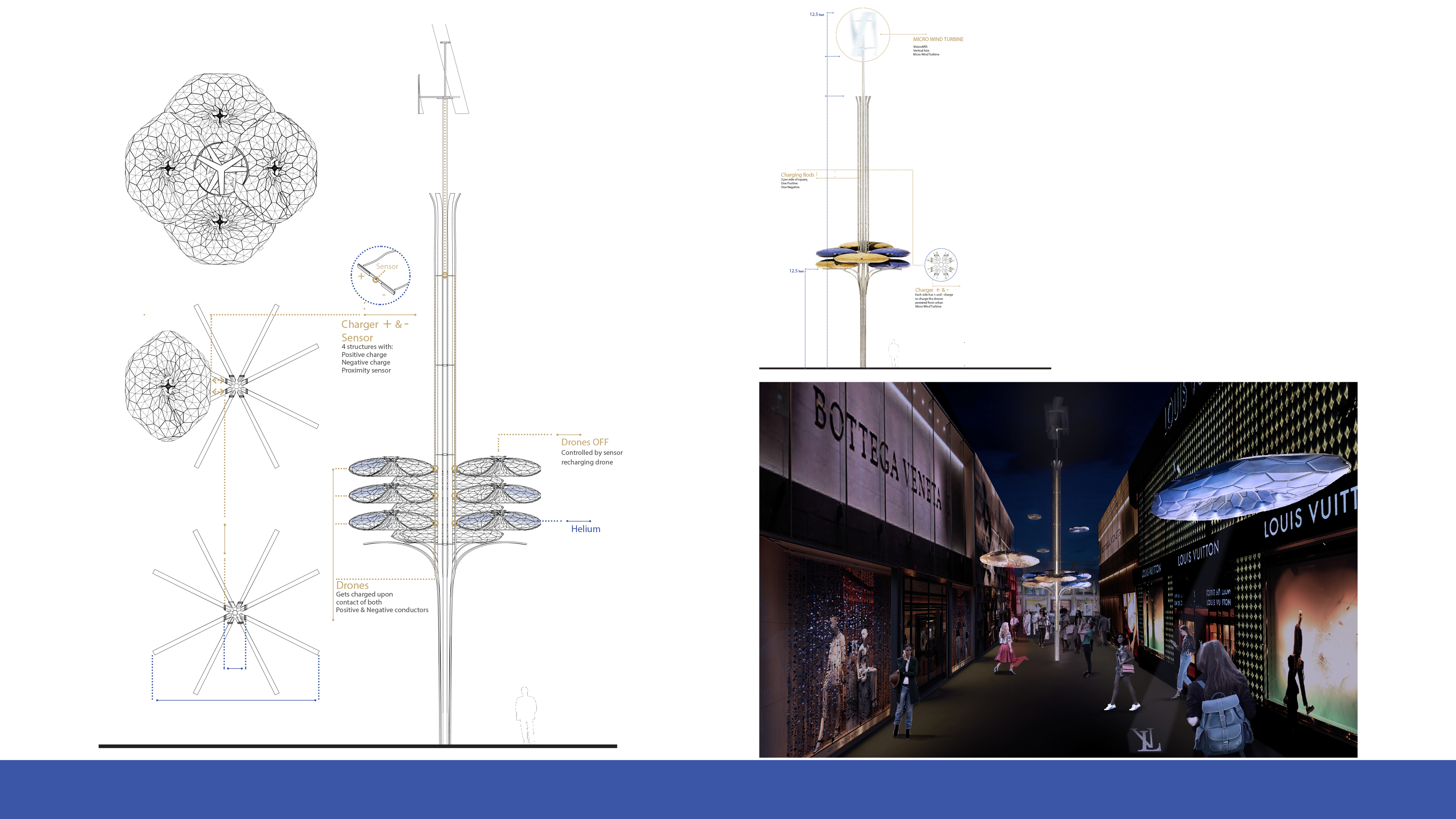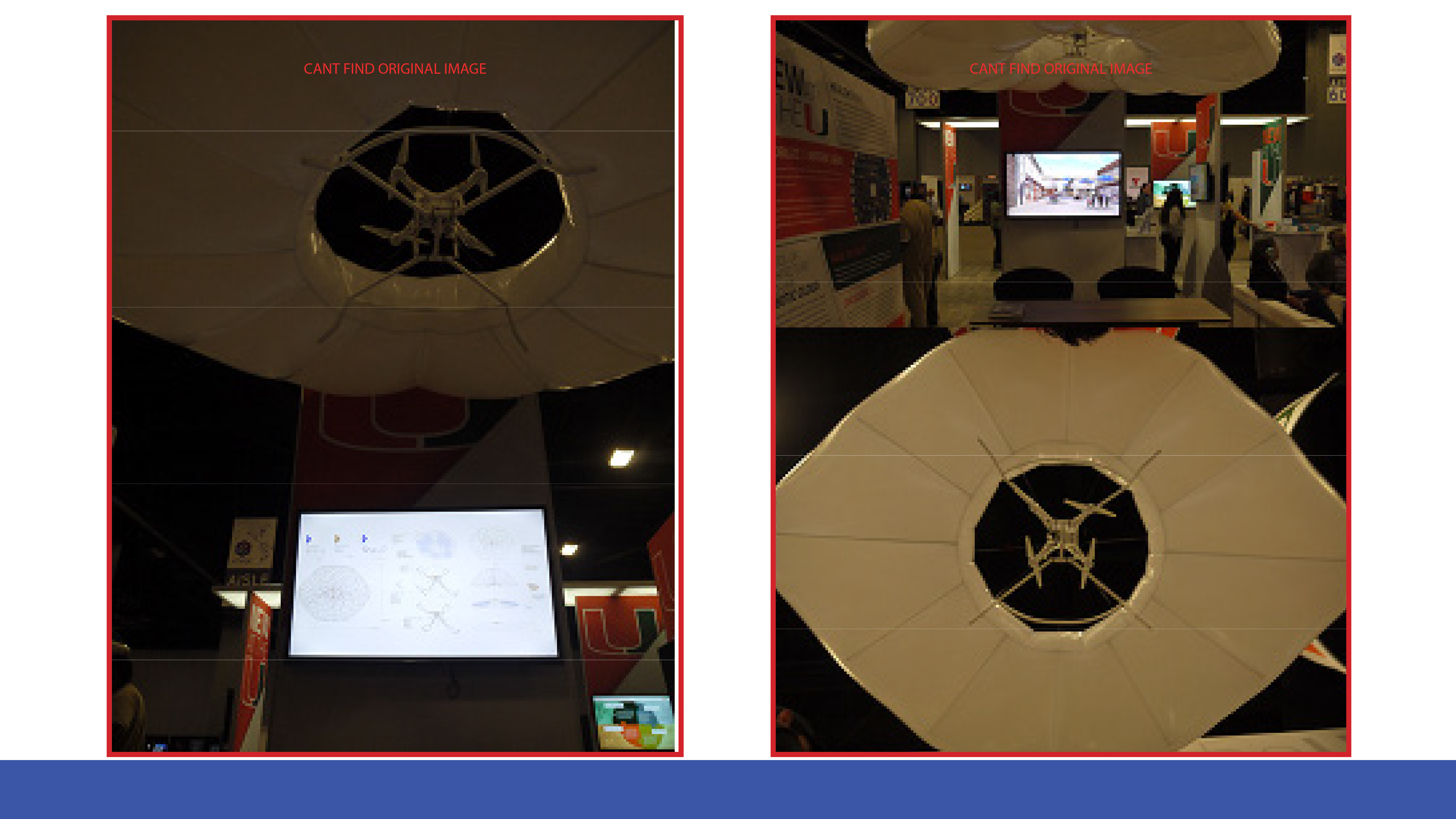Robotic Cloud utilizes the Sunbrella fabric as an inflatable, dynamic, mobile-shading device capable of shading one individual or large groups of people across the Miami Design District. It is a two-part, worker-hive system loosely inspired by the honey bee colony. The workers, a.k.a Drones, are automated quadcopters that carry helium-inflated hexagons. These hexagon inflatables use Sunbrella marine fabrics engineered to withstand sun, wind, and rain. In order to make the fabric airtight, the Sunbrella fabric will be coated on the inside with liquid latex. The Drones are automated using an algorithm determined by the current weather conditions, swarming algorithms, and the visitor’s desire. As a result, the Drones can be configured in a variety of ways from flocking together and casting large shaded areas like an overcast, to hovering individually so it can be used as a personal shading device. In addition, the quadcopter carries an electronic box holding a Raspberry Pi, camera, pico projector, speaker, and microphone. The addition of these electronic devices gives the Drones greater flexibility to respond and communicate with the visitor’s desires and needs. The outer edges of the hexagon inflatable are fitted with proximity sensors as well as cathode and anode conductors to be used for charging upon physical contact. The hives, a.k.a Docking Towers, are independent columns installed throughout the Miami Design District that store and charge the Drones. Each Docking Tower is outfitted with a micro-wind turbine at the top to charge the Drones using wind power. The power is delivered to each Drone by cathode and anode rods placed on each side of the column. As a result, Robotic Cloud proposes a dynamic shading system capable of providing shade for a wide range of conditions in the Miami Design District.
- Accessibility Options:
- Skip to Content
- Skip to Search
- Skip to footer
- Office of Disability Services
- Request Assistance
- 305-284-2374
- Display:
- Default
- High Contrast
- Apply
- About UM
- Give to UM
-
Schools
- School of Architecture
- College of Arts and Sciences
- Miami Herbert Business School
- School of Communication
- School of Education and Human Development
- College of Engineering
- School of Law
- Rosenstiel School of Marine, Atmospheric, and Earth Science
- Miller School of Medicine
- Frost School of Music
- School of Nursing and Health Studies
- The Graduate School
- Division of Continuing and International Education
- Alumni



